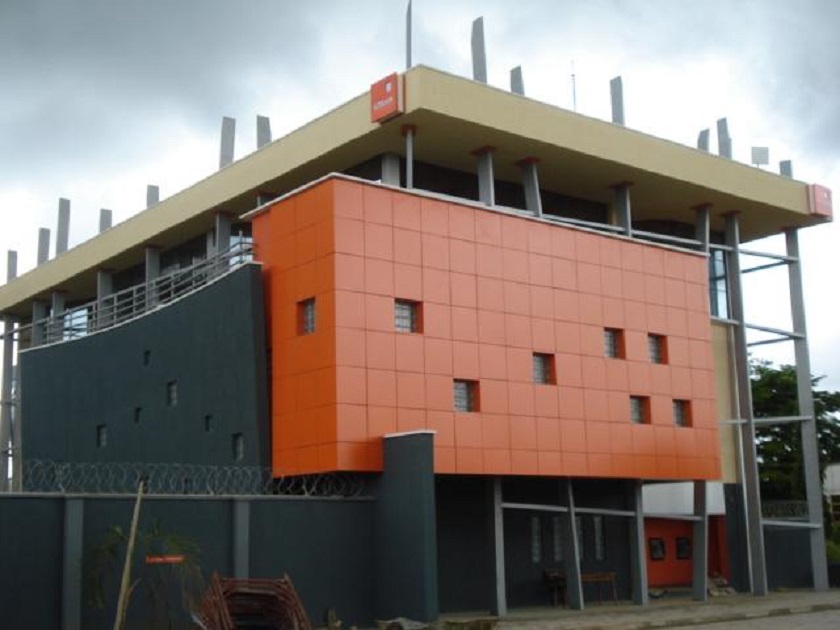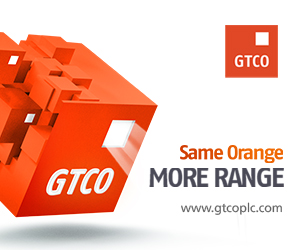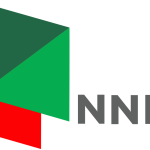Media OutReach
AI adoption across Finance functions achieves standout levels of ROI with usage only set to increase
71% of organisations are using AI in their finance operations
- 57% of leaders say ROI is exceeding their expectations, compared to 29% of others.
- Financial reporting is the most common usage area – but this is widening out to include treasury management, risk management and tax
- Nearly three-quarters of leaders have developed principles and guidelines on the responsible use of AI
HONG KONG SAR – Media OutReach Newswire – 4 December 2024 – New research from KPMG International reveals the dramatic extent to which artificial intelligence (AI) is being deployed in organisations’ finance operations – with compelling levels of ROI and a wide range of benefits including better data and decisions, faster insights and reporting, lower costs, and greater operational effectiveness. The KPMG report reveals that organisations are extracting the most value from machine learning, deep learning, and generative AI and report the ROI from these technologies is either meeting or exceeding expectations.
The research, published in the KPMG global AI in finance report, covered 2,900 organisations across 23 countries and built upon research conducted earlier this year across 1,800 organisations in 10 countries. A maturity framework was created to assess respondents into three AI-readiness groups: 24% of organisations qualify as Leaders, while 58% are middle ground Implementers, and 18% are Beginners. KPMG has also developed an AI maturity benchmarking tool designed to help organisations assess their progress in the AI transformation journey.
AI deployment grows, Gen AI a key future priority
71% organisations are using AI to some degree in their financial operations. Currently, 41% of them are using AI to a moderate or large degree – and this is predicted to rise to 83% over the next three years. In just six months since the first wave of research, the spread of AI is already visible. Whereas in April 2024, 40% of organisations in the original 10 countries were using traditional AI in their finance operations to a moderate or large degree, this has increased to 45 percent.
The use of Gen AI has also grown. The percentage of companies with no intention to use Gen AI has fallen from 6% to just 1% now. Gen AI has become a top priority for the future, with 95% of leaders and 39% of others expecting to selectively or widely adopt it within financial reporting in the next three years.
Adoption everywhere
KPMG’s research also underlines the extent to which AI is being utilised around the world. While companies in the US, Germany and Japan are well ahead in AI usage, other major economies, such as Italy and Spain, are behind. The same dichotomy is evident in emerging markets, with China and India ahead in AI usage, and Saudi Arabia and the African countries further behind.
Adam Scriven, Head of Finance Transformation, Hong Kong at KPMG China, says: “Building AI capability has become an imperative for CFOs and Finance functions in embracing the digital age. It’s critical to recognise that AI is a capability, and not a technology product. We all have to start the AI journey, learn and build better capabilities. KPMG is helping clients establish the right data and systems, modelling and analytics backbone in order to harness the power of AI. KPMG is also co-creating AI solutions with clients to help build capability and go on the journey together.”
Alan Yau, Audit Innovation Leader at KPMG China, says: “AI in financial reporting is transforming the industry with enhanced accuracy, efficiency, and real-time insights. As a mega trend, AI enables predictive analytics and data-driven decisions. Upskilling and retaining talent are crucial in this evolution. Organisations must prioritise continuous learning to equip their workforce with AI skills, fostering innovation and adaptability, in order to drive sustainable growth and maintain a competitive edge in the market.”
AI usage opening out across finance
Companies are turning to AI in every area of corporate finance. Financial reporting is the most widespread usage area, with nearly two-thirds of companies piloting or using AI for reporting, accounting and financial planning. But other areas are following suit: nearly half of companies are now piloting or using AI for treasury and risk management. This can generate better debt management, cash-flow forecasting, fraud detection, credit risk assessment, and scenario analysis in the treasury and risk management functions. Tax management, however, sits slightly further behind. Less than one-third of companies piloting or using AI in this area, although about half are in the planning stage.
Leaders moving ahead
Leaders are showing the way, with more than three times as many leaders (87%) as others (27%) using AI in finance to a moderate or large degree. Leaders are moving fast and have on average developed six use cases for AI, almost double the number amongst others. Top areas for usage are research and data analysis (85%), fraud detection and prevention (81%), predictive analysis and planning (78%), and using Gen AI for composing documents and other content (75%).
Common barriers that all companies encounter include data security vulnerabilities (57%), limited AI skills and knowledge (53%), gathering consistent data (48%) and costs (45%) – but leaders are better able to navigate these through the steps they have taken. Their chief barriers become more advanced ones, such as integrating AI solutions with existing tools and overcoming any residual staff resistance.
Reaping the benefits and achieving ROI
As the use of AI in finance grows, the dividends multiply. When starting out, finance teams report two to three benefits. By the time they are leaders, that number is seven.
Just as the benefits from AI can rise with its usage, so does the potential return on investment. As a result, a remarkable 57% of leaders say ROI is not just meeting but exceeding their expectations. Even amongst less advanced adopters, nearly one third (29%) report the same.
Stanley Sum, Head of Digital Enablement at KPMG China, says: “AI is reshaping the finance function, paving the way for both potential opportunities and challenges. Hence, robust AI governance is not merely conducive to meeting regulatory demands, but it stands as an essential component. KPMG assists its clients in their journey to manage risks, promoting transparency and the ethical usage of AI in governance. By implementing mindful supervision now, we help safeguard the future of finance.”
Hashtag: #KPMGChina
The issuer is solely responsible for the content of this announcement.
About KPMG China
KPMG China has offices located in 31 cities with over 14,000 partners and staff, in Beijing, Changchun, Changsha, Chengdu, Chongqing, Dalian, Dongguan, Foshan, Fuzhou, Guangzhou, Haikou, Hangzhou, Hefei, Jinan, Nanjing, Nantong, Ningbo, Qingdao, Shanghai, Shenyang, Shenzhen, Suzhou, Taiyuan, Tianjin, Wuhan, Wuxi, Xiamen, Xi’an, Zhengzhou, Hong Kong SAR and Macau SAR. Working collaboratively across all these offices, KPMG China can deploy experienced professionals efficiently, wherever our client is located.
KPMG is a global organization of independent professional services firms providing Audit, Tax and Advisory services. KPMG is the brand under which the member firms of KPMG International Limited (“KPMG International”) operate and provide professional services. “KPMG” is used to refer to individual member firms within the KPMG organization or to one or more member firms collectively.
KPMG firms operate in 143 countries and territories with more than 265,000 partners and employees working in member firms around the world. Each KPMG firm is a legally distinct and separate entity and describes itself as such. Each KPMG member firm is responsible for its own obligations and liabilities.
KPMG International Limited is a private English company limited by guarantee. KPMG International Limited and its related entities do not provide services to clients.
In 1992, KPMG became the first international accounting network to be granted a joint venture licence in the Chinese Mainland. KPMG was also the first among the Big Four in the Chinese Mainland to convert from a joint venture to a special general partnership, as of 1 August 2012. Additionally, the Hong Kong firm can trace its origins to 1945. This early commitment to this market, together with an unwavering focus on quality, has been the foundation for accumulated industry experience, and is reflected in KPMG’s appointment for multidisciplinary services (including audit, tax and advisory) by some of China’s most prestigious companies.
![]()
Media OutReach
A Diamond is Forever And Lane Crawford Launch “The Forever Gifts: A Natural Diamond Series”

“The Forever Gifts: A Natural Diamond Series” the ultimate destination for bespoke natural diamond master creations in Hong Kong, launched with a line-up of activities at Lane Crawford’s flagship retail space in IFC mall. Renowned actress Charmaine Sheh, fashion trendsetter Hilary Tsui, VIPs, media members and influencers from Hong Kong and China were invited to explore exquisite natural diamond collections, thoughtfully curated by Lane Crawford.

This special series starts with a selection of contemporary fine jewellery brands, each offering a unique design story and a commitment to creativity and excellence. They include State Property, YEPREM, Mio Harutaka, KORLOFF and Claudia Ma Fine Jewellery. “This collaboration marks an important moment for Lane Crawford. Together with De Beers, we’re creating a destination that celebrates the beauty of natural diamonds through exceptional craftsmanship and global creativity. This exclusive space reimagines how clients engage with fine jewellery – bringing artistry, innovation, and the opportunity to design something truly personal.” Emily Wong, Senior Vice President of Merchandising at Lane Crawford.
The exclusive event brought a series of interactive workshops led by experts Jodine Bolden and Samantha Sibley from the De Beers Institute of Diamonds alongside London-based multi-disciplinary artist Annette Fernando.

At the natural diamond workshop, participants gained hands-on experience on rough diamond sorting, polished diamond grading, and differentiation of natural diamonds versus synthetics. Participants also had the unique opportunity of viewing a nearby 297-carat rough diamond and kimberlite carrying a 22-carat rough diamond. Also on display was a gem called “Beating Heart”, a 0.329-carat rough diamond that features a smaller diamond moving freely inside its larger counterpart, a rarity that showcases the extraordinary conditions under which diamonds can form. This exquisite piece, recovered by De Beers Group and analyzed at the facilities of De Beers Institute of Diamonds, is recorded on the Tracr platform, giving insight into its history and heritage. Upon completion of the workshop, each participant received a natural diamond masterclass certificate from the De Beers Institute of Diamonds.
“We are pleased to partner with Lane Crawford for this special series of events to proudly recognize the enduring value of natural diamonds, and to honour the artists who continue to bring life to these creations.” says Loletta Lai, Vice President, Natural Diamonds APAC De Beers Group.
Complementing the technical insight offered by the De Beers Institute of Diamonds, artist Annette Fernando shared her art creations inspired by natural diamonds, named The Multi-Faceted Self. Through a reflective coloring workshop, Annette invited participants to explore the transformative journey of natural diamonds as a metaphor for personal growth and resilience.
The partnership between A Diamond is Forever and Lane Crawford spotlights crafted natural diamond pieces sourced and styled from around the globe, the most treasured gifts ever! These iconic legacy brands and exciting new talent alike, all centered around the timeless beauty of natural diamonds, come together at Lane Crawford, the ultimate destination for discovery, craftsmanship, and contemporary luxury.
Featured Brands
Claudia Ma Fine Jewellery
Claudia Ma, driven by a passion for modern high jewelry and an unwavering dedication to quality, founded her eponymous brand, Claudia Ma, in 2000. With a distinctive design sensibility and an eye for artistic aesthetics, she masterfully reinterprets classic themes through innovative modern expressions. Her creations have earned widespread acclaim for their signature style and exceptional craftsmanship. Over the years, Claudia has collaborated with renowned names such as Shanghai Tang, Lane Crawford, and De Beers Group Forevermark, solidifying her brand’s standing in Hong Kong’s fine jewelry landscape.
Her latest work draws inspiration from the barbell as a symbol of balance, focus, and strength. Crafted in 18k gold and accented with natural diamonds, these versatile pieces embody resilience while seamlessly elevating everyday style.
According to Claudia, “Natural diamonds and craftsmanship go hand in hand. Craftsmanship brings out the diamond’s inner brilliance, while my design presents this timeless classic in a modern way for generations to enjoy. Without this artistry, even the finest diamond remains just a hidden treasure.”
State Property
An award-winning contemporary fine jewellery label from Singapore, State Property fuses modern design with traditional craftsmanship. Founded in 2015 by a jeweller and an industrial designer, the brand draws inspiration from culture, literature, and history—bringing to life structured silhouettes in precious metals that embrace the softness of the human form.
“There’s an emotional gravity with natural diamonds that’s hard to replicate, State Property shares. “Their rarity, beauty, and resilience make them extraordinary. Each one a fragment of the earth’s story, time in a crystallised form. We’re drawn to materials that carry meaning, and diamonds embody permanence, memory, and the quiet luxury of time. At State Property, we strive to have those same qualities reflected in our own work — creating jewellery with intention, designed to endure and be cherished across generations.”
YEPREM
Known for its avant-garde creations, House of YEPREM is a family-run brand that continues to push the boundaries of contemporary diamond jewellery. With a legacy rooted in timeless craftsmanship and visionary design, YEPREM’s striking pieces are now celebrated across America, Europe, the Middle East, and Asia.
“Natural diamonds are the ultimate expression of authenticity and endurance, virtues that mirror YEPREM’s journey and craftsmanship. Born from time, pressure, and perseverance, each diamond holds the essence of transformation and strength. Their inherent brilliance and purity transcend trends, embodying emotion and individuality. In YEPREM’s world, a natural diamond is not merely a material, it is the foundation upon which stories of resilience and radiance are told.”
Mio Harutaka
Crafted in Japan by local artisans, MIO HARUTAKA channels the beauty of Mother Nature into every design. The brand, founded in 2011, is committed to achieving diamond traceability and sustainability while maintaining exceptional artisanal craftsmanship. Harutaka shares: “Craftsmanship is essential—it accounts for almost everything. All of these details depend entirely on the skills of the craftsmen. Craftsmanship is what allows me to welcome close, hands-on appreciation, knowing that each piece will meet that level of scrutiny with confidence and beauty.”
KORLOFF
Since 1978, KORLOFF has been a symbol of true femininity—magnetic, adventurous, and bold. Renowned for crafting exquisite bespoke jewelry, each piece reflects daring designs and the unmatched artistry of French craftsmanship, showcasing the Maison’s boundless creativity and passion. “Our story began with a diamond, the Black Korloff, the largest brilliant-cut natural black diamond in the world. Its uniqueness, shaped over millions of years, continues to inspire us every day as a symbol of mystery, transformation, and the magic of nature. Natural diamonds possess an authenticity and depth that no other material can replicate. They remind us that beauty is born from time, pressure, and light, forces that mirror the creative journey behind each Korloff jewel.”
Meet the De Beers Institute of Diamonds Experts:
Jodine Bolden, Director of Education De Beers Institute of Diamonds
Jodine has previously developed her career as an operations line manager within large FMCG companies, and European HR Management roles within the luxury Health & Beauty industry where she first developed her passion for creating exceptional consumer experiences. After moving to De Beers, she worked as HR Manager for 5 years and discovered her fascination for diamonds as she supported various global functions across the De Beers estate, she then involved creating the Institute of Diamonds Education Service and developing each course that they now offer to their clients.
Since 2018 the De Beers Institute of Diamonds Education Service has provided education on a range of diamond subjects including, Rough Diamond Sorting, Polished Diamond Grading and Laboratory-Grown Detection.
Samantha Sibley, Technical Liaison Manager De Beers Group, UK
With over 30 years’ experience in De Beers’ research, development and commercial teams, Samantha brings a wealth of knowledge regarding the characteristics of both natural and laboratory-grown diamonds. She has been involved in the development of De Beers Group’s current and previous suites of verification instruments and currently also facilitates training and educational courses around the world on the use of these instruments for accurate screening results. Other projects involve research into irradiation and HPHT colour treatments and the utilisation of this information to develop screening processes within the De Beers grading laboratories.
Sam has a BTEC Higher National Certificate in Physics, is a diamond fellow of the Gemmological Association of Great Britain (DGA) and holds a team leader qualification from Leadership Management UK and the Chartered Management Institute. She has presented on diamond topics globally and has had first-hand experience of the diamond industry over many years through visits to mines, cutting centres, polishing factories, gemmological laboratories and tradeshows.
Annette Fernando, Commissioned Artist, “The Multi-Faceted Self” at The Forever Gifts: A Natural Diamond Series
Annette Fernando (b. 1991, London) is a multi-disciplinary artist and curator. She holds a BA in Fine Art from Central Saint Martins and is currently pursuing an MA in Contemporary Art at Sotheby’s Institute of Art, where she was awarded the prestigious Cultural Leaders Scholarship.
Fernando’s artistic repertoire spans drawing, printmaking, painting, and film. Fernando’s current work is driven to immortalise natures scenes, capturing the beauty of moments often overlooked through various mediums. Fernando’s work has garnered significant recognition, including winning the Jerwood Drawing Prize in 2014 and selections for the Royal Academy Summer Exhibition in 2021 and 2023. Her pieces are held in public and private collections across the USA, France, Hong Kong, and the UK.
Hashtag: #adiamondisforeverhk #lanecrawford #adiamondisforever #theforevergifts #naturaldiamonds #diamonds
![]() https://www.debeersgroup.com/
https://www.debeersgroup.com/![]() https://www.linkedin.com/company/debeersgroup/posts/?feedView=all
https://www.linkedin.com/company/debeersgroup/posts/?feedView=all![]() https://www.facebook.com/DeBeersGroupOfCompanies
https://www.facebook.com/DeBeersGroupOfCompanies![]() https://www.instagram.com/debeersgroup/
https://www.instagram.com/debeersgroup/
The issuer is solely responsible for the content of this announcement.
About De Beers Group
Established in 1888, De Beers Group is the world’s leading diamond company with expertise in the exploration, mining, marketing and retailing of diamonds. Together with its joint venture partners, De Beers Group employs more than 20,000 people across the diamond pipeline and is the world’s largest diamond producer by value, with diamond mining operations in Botswana, Canada, Namibia and South Africa. Innovation sits at the heart of De Beers Group’s strategy as it develops a portfolio of offers that span the diamond value chain, including its jewellery houses, De Beers Jewellers and Forevermark, and other pioneering solutions such as diamond sourcing and traceability initiatives Tracr and GemFair. De Beers Group also provides leading services and technology to the diamond industry in the form of education and laboratory services via De Beers Institute of Diamonds and a wide range of diamond sorting, detection and classification technology systems via De Beers Group Ignite. De Beers Group is committed to ‘Building Forever,’ a holistic and integrated approach for creating a better future – where safety, human rights and ethical integrity continue to be paramount; where communities thrive and the environment is protected; and where there are equal
opportunities for all. De Beers Group is a member of the Anglo American PLC group. For further information, visit www.debeersgroup.com.
About Lane Crawford
Founded in 1850, Lane Crawford is an iconic luxury department store, with a mission to search the world for the most exciting talent and product, to create the ultimate luxury edit of fashion and lifestyle for its customers across Greater China. Featuring the largest own-bought designer portfolio across Womenswear, Menswear, Beauty & Wellbeing,
Home and Lifestyle, and Fine Jewellery in the region, Lane Crawford constantly evolves its product, experience, and services offer to embrace the most innovative and relevant designers and exceptional craftsmanship of the season, and to reflect the dynamic pace of its market and customers.
With four stores in Hong Kong; and three stores across Shanghai, Beijing and Chengdu, supported by a global digital flagship, and a purpose-built ecommerce site for China and WeChat store, Lane Crawford is Greater China’s first and only omni-channel luxury fashion retailer. Each store is personalised to its location and designed to provide sensory experience, fusing fashion, design, art and music, while offering exceptional service.
Lane Crawford is a part of The Lane Crawford Joyce Group, Asia’s premier fashion retail, brand management and distribution group, which also includes cutting-edge fashion boutique Joyce; and fashion, beauty, and lifestyle brand management and distribution business ImagineX Group.
Media OutReach
Happy New Year for Hong Kong’s Tourism and Mega Events Economy

A series of events including music performances and a light show were arranged by the Hong Kong Tourism Board (HKTB) with the aim of conveying positive energy, care, and blessings of peace to both locals and visitors, and to welcome a hopeful new year together.
The Hong Kong Special Administrative Region (HKSAR) Government had anticipated a large number of visitors during the festive season, which included a four-day long weekend over Christmas, while January 1 coincided with the start of a three-day long holiday on the Chinese Mainland.
The Government said the number of non-Chinese Mainland visitors reached a post-Covid record every day during the Christmas holiday with around 50,000 visitors daily from December 25 to 27, accounting for around 33% of the total number of travellers during that period.
This influx of festive visitors provided a further boost to Hong Kong’s tourism sector. In 2025, Hong Kong received 50 million visitors, marking a 12% year-on-year rise. This included 38 million visitors from the Chinese Mainland (up 11% year-on-year) and 12 million non-Chinese Mainland visitors (up 15% year-on-year).
In the Euromonitor International Top 100 City Destinations Index 2025, Hong Kong ranked second globally for international arrivals, behind only Bangkok.
The large number of visitors over festive period provided further impetus to the local tourism industry, which had already been buoyed by a series of mega events at the new Kai Tak Sports Park. Since its opening in March 2025, KTSP has become a new hub for major sports and entertainment events.

Looking ahead, the Kai Tak Stadium will welcome global pop icons BLACKPINK for back-to-back shows of the highly anticipated Asia leg of their WORLD TOUR <DEADLINE> later this month.
Hashtag: #hongkong #brandhongkong #asiasworldcity #tourism #megaevents #newyear #countdown #kaitaksportspark
![]() https://www.brandhk.gov.hk/
https://www.brandhk.gov.hk/![]() https://www.linkedin.com/company/brand-hong-kong/
https://www.linkedin.com/company/brand-hong-kong/![]() https://x.com/Brand_HK/
https://x.com/Brand_HK/![]() https://www.facebook.com/brandhk.isd
https://www.facebook.com/brandhk.isd![]() https://www.instagram.com/brandhongkong
https://www.instagram.com/brandhongkong
The issuer is solely responsible for the content of this announcement.
Media OutReach
Visit Malaysia 2026 Countdown Festival: A New Year’s Eve Celebration

Prime Minister celebrated the New Year together with Malaysians and officially kicked off Visit Malaysia 2026 at Pavilion Kuala Lumpur, amid captivating pyromusical fireworks, drone formations, laser shows, and stunning 3D anamorphic projections, alongside a star-studded lineup of top artistes
The highlight of the night was the countdown moment led by YAB Dato’ Seri Anwar Ibrahim, Prime Minister of Malaysia as the Guest of Honour, who joined thousands of Malaysians and visitors to welcome the New Year. Underscoring the national significance of the occasion, the celebration was also attended by YB Dato Sri Tiong King Sing, Minister of Tourism, Arts and Culture Malaysia.
YB Dato Sri Tiong King Sing, Minister of Tourism, Arts and Culture Malaysia, stated: “This celebration was a symbolic event to ignite the momentum for VM2026 while welcoming the world to our shores. Malaysia is now fully ready to showcase its unique culture, creativity, and the warm hospitality of its people. It marks a strong head start towards our aspiration of 43 million international visitor arrivals, further solidifying our position on the global tourism map.”
The VM2026 Countdown Festival stood as a grand manifestation of Malaysia’s excellence on the global stage. Drawing thousands of domestic and international visitors, the New Year’s Eve celebration featured a breathtaking multimedia extravaganza, seamlessly integrating pyromusical fireworks, drone formations and laser projections. A key highlight was the stunning 3D anamorphic display starring the campaign’s beloved Malayan Sun Bear mascots, Wira and Manja.
The main stage was also graced by a stellar lineup of renowned local artistes, including Shila Amzah, Aina Abdul, Belle Sisoski, Vanessa Reynauld, Kidd Santhe, The Kuans, KLP48, Nazu, Rezza Shah, Danson Ooi, Euzen, and Penny. Their performances were complemented by dedicated cultural showcases that blended traditional rhythms with modern beats, elevating the celebratory atmosphere of the night.
The VM2026 Countdown Festival was a wider festive programme that began as early as 26 December 2025, extending the celebrations beyond the heart of the city. Parallel events and activities were held, offering visitors a glimpse of Malaysia’s rich heritage and creative spirit while embodying the essence of Truly Asia.
These included the VM2026 Bazaar at Pavilion Bukit Jalil, VM2026 Arts & Culture Showcase at Fahrenheit 88, featuring cultural pop-ups, interactive experiences such as batik art, porcelain making, wau decoration among others and showcases that drew strong public participation over several days. Malaysia’s vibrant food scene was brought to life at the VM2026 Bukit Bintang Food Bazaar, Lot 10, presenting a curated mix of traditional cuisines, local favourites and contemporary delights.
The build-up was further amplified by daily live 10 iconic DJs, flash mobs at the Bukit Bintang Crossing, Malaysia’s very own infamous Shibuya crossing and busking performances across key locations, creating a steady prelude to the countdown and sparking excitement both on the ground and across social media.
VM2026 provides a platform to bring Malaysia’s narrative to the global stage, guided by five strategic pillars: sustainability, cultural heritage, nature-based adventure, digital innovation, and global connectivity. However, these strengths will only truly shine when celebrated together by all Malaysians.
The festival was organised with the strong support of Kuala Lumpur City Hall (DBKL) and Tourism Malaysia as key partners. The success of the event was also made possible through collaboration with strategic partners, including Istana Budaya, the National Department for Culture and Arts (JKKN), the National Heritage Department, and the Malaysian Handicraft Development Corporation.
As the immersive countdown finale illuminated the Kuala Lumpur skyline, the VM2026 Countdown Festival marked a confident and celebratory opening to the tourism year ahead, reaffirming Malaysia’s readiness to welcome the world in 2026.
The year 2026 will be anchored by a series of mega events, including major festive celebrations such as Hari Raya Aidilfitri, Chinese New Year, and Deepavali, which will showcase Malaysia’s rich cultural and ethnic diversity while enhancing visitor experiences through a vibrant presentation of local arts, heritage, and entertainment.
This momentum will be driven by the implementation of a wide range of high-impact tourism events and programmes, encompassing cultural festivals, conventions, and MICE activities (Meetings, Incentives, Conferences and Exhibitions), as well as large-scale tourism exhibitions. Adopted on a nationwide scale, this approach aims to expand tourism reach, encourage longer visitor stays, and provide meaningful opportunities for travellers to experience the distinct cultural identities of Malaysia’s diverse regions.
Hashtag: #VM2026Countdown #VisitMalaysia2026 #SurrealExperiences #MalaysiaTrulyAsia
The issuer is solely responsible for the content of this announcement.
-

 Feature/OPED6 years ago
Feature/OPED6 years agoDavos was Different this year
-
Travel/Tourism9 years ago
Lagos Seals Western Lodge Hotel In Ikorodu
-

 Showbiz3 years ago
Showbiz3 years agoEstranged Lover Releases Videos of Empress Njamah Bathing
-

 Banking8 years ago
Banking8 years agoSort Codes of GTBank Branches in Nigeria
-

 Economy3 years ago
Economy3 years agoSubsidy Removal: CNG at N130 Per Litre Cheaper Than Petrol—IPMAN
-

 Banking3 years ago
Banking3 years agoFirst Bank Announces Planned Downtime
-

 Banking3 years ago
Banking3 years agoSort Codes of UBA Branches in Nigeria
-

 Sports3 years ago
Sports3 years agoHighest Paid Nigerian Footballer – How Much Do Nigerian Footballers Earn













